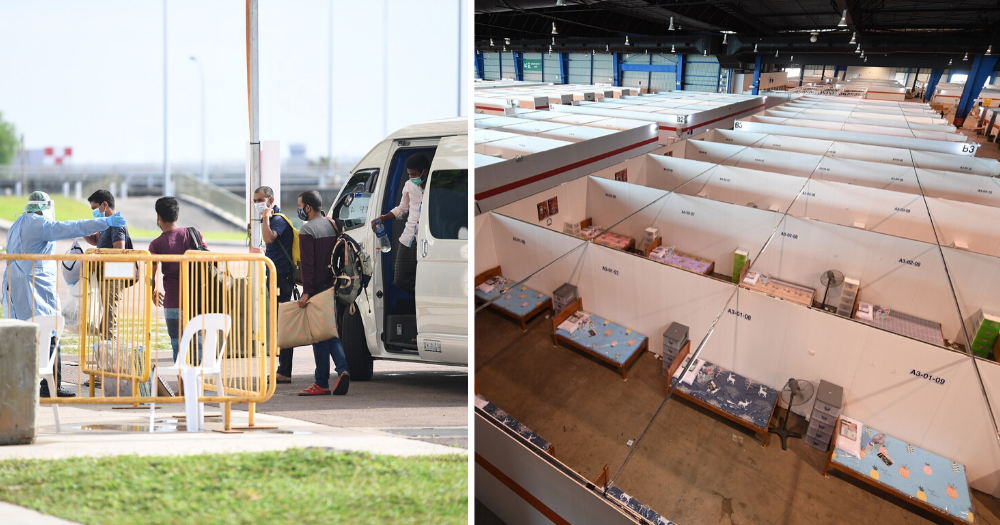Changi Exhibition Centre (CEC) is one of the locations converted into an isolation area for Covid-19 patients who are recovering from the infection, or who have only mild symptoms.
The 33,000m² CEC, which can house around 2,700 patients, is a means to free up space and healthcare resources for patients who do not require hospital care.
Senior Minister Teo Chee Hean previously visited the centre to check the facilities and shared on Facebook several photos of the converted space.
First batch of patients
On Apr. 25, the centre's first batch of around 50 Covid-19 patients moved in too. All of the patients are migrant workers.
A Facebook post by Pioneer, an entity under SAFRA, shared some photos of the move, as well as how the workers would be cared for.
Workers were seen getting off their transport, lugging backpacks and even pillows.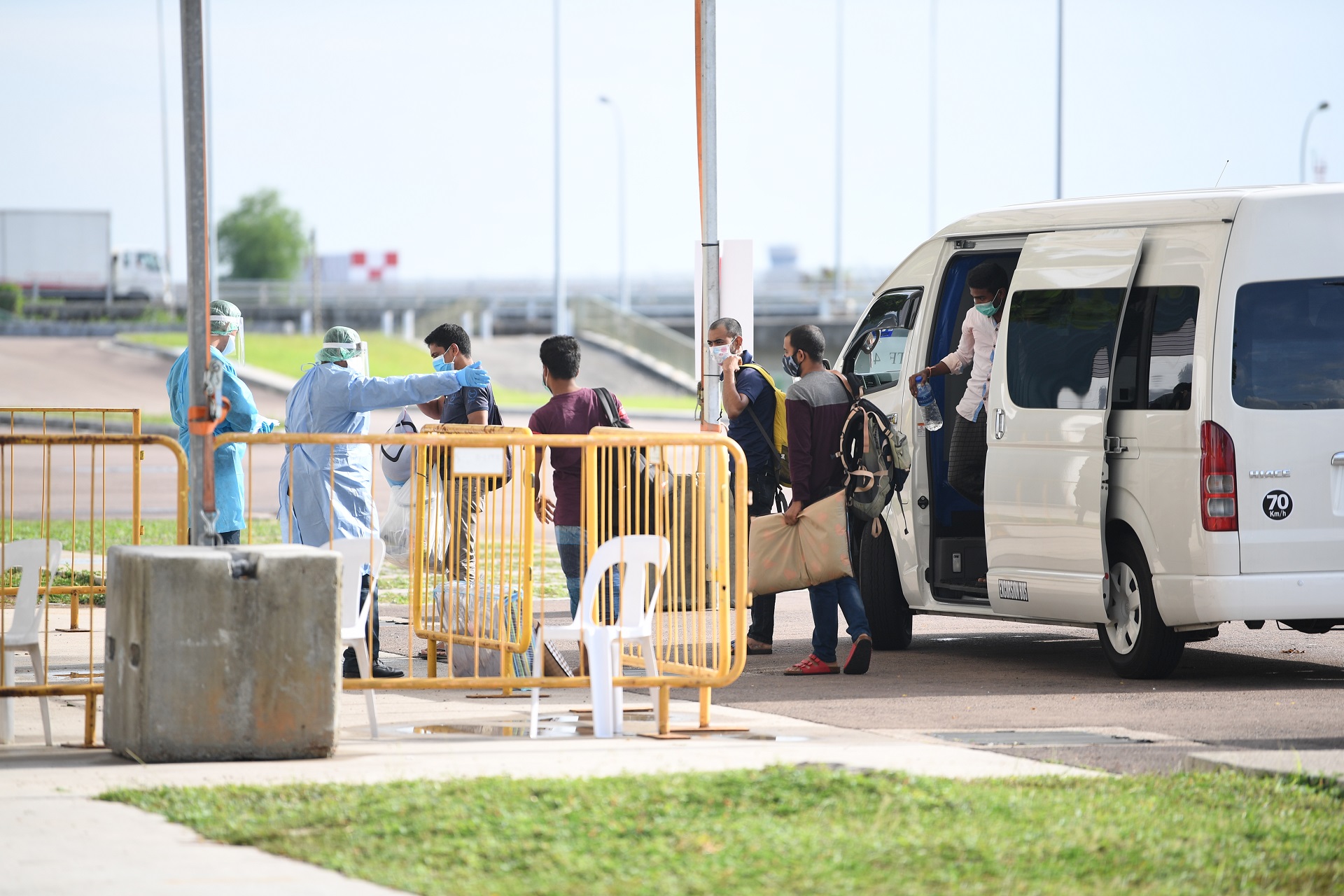 Photo from Pioneer / FB
Photo from Pioneer / FB
They were greeted by healthcare personnel, who verified their identities and issued patients with isolation orders before entering the CEC.
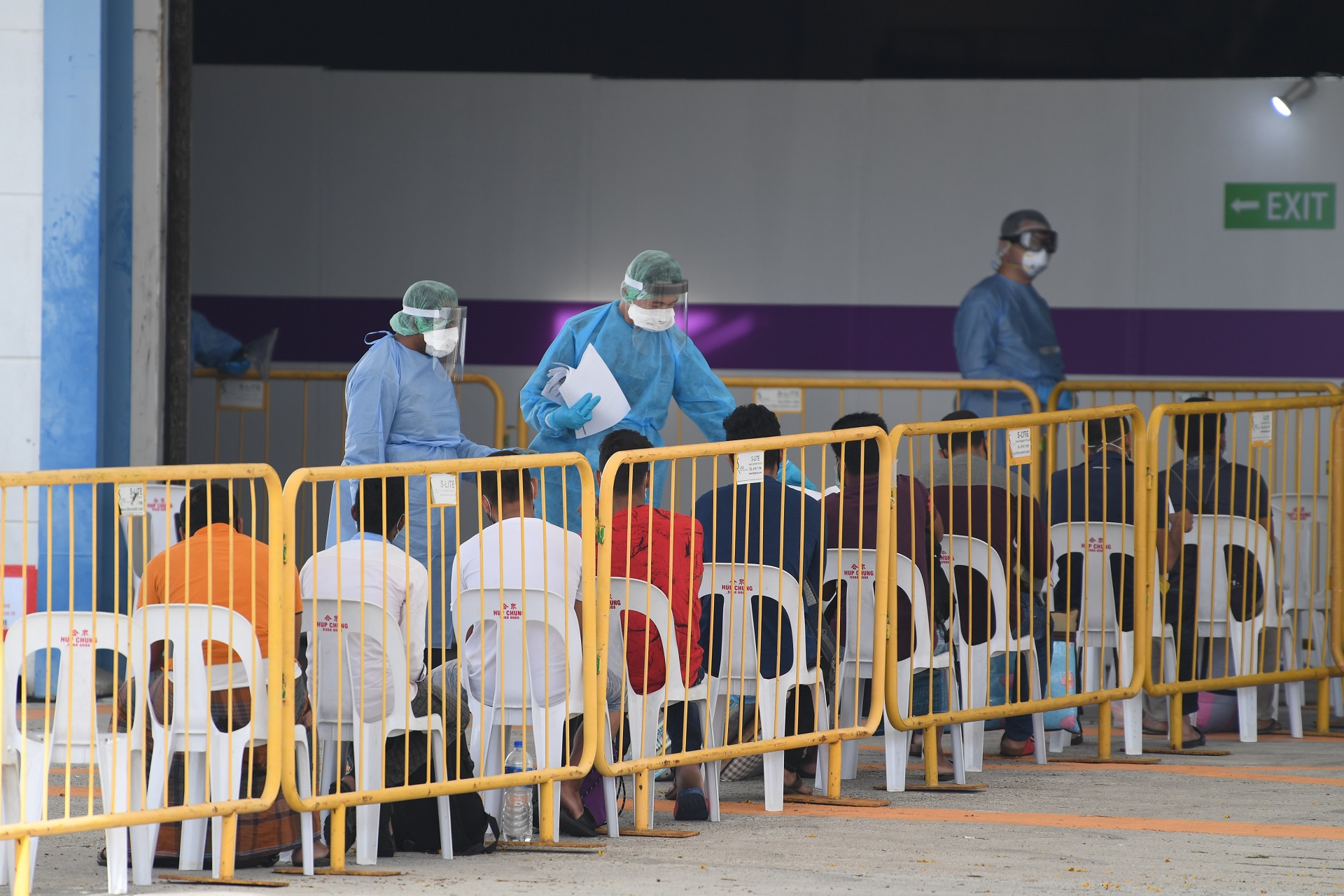 Photo from Pioneer / FB
Photo from Pioneer / FB
Sleeping areas and welcome pack
In preparation for the incoming patients, sleeping areas with beds, pillows, fans and a small set of drawers have already been prepared.
Each patient will receive a welcome pack of essentials including toiletries, masks and thermometers.
The team from The Chevrons, a recreational club associated with the Singapore Armed Forces, have been working since Apr. 6 to provide them with these items and liaising with suppliers to acquire proper bedframes and mattresses.
Upon arrival at the CEC, patients will also receive a care pack of assorted medicines for common symptoms such as fever and cough so that they can self-medicate if needed.
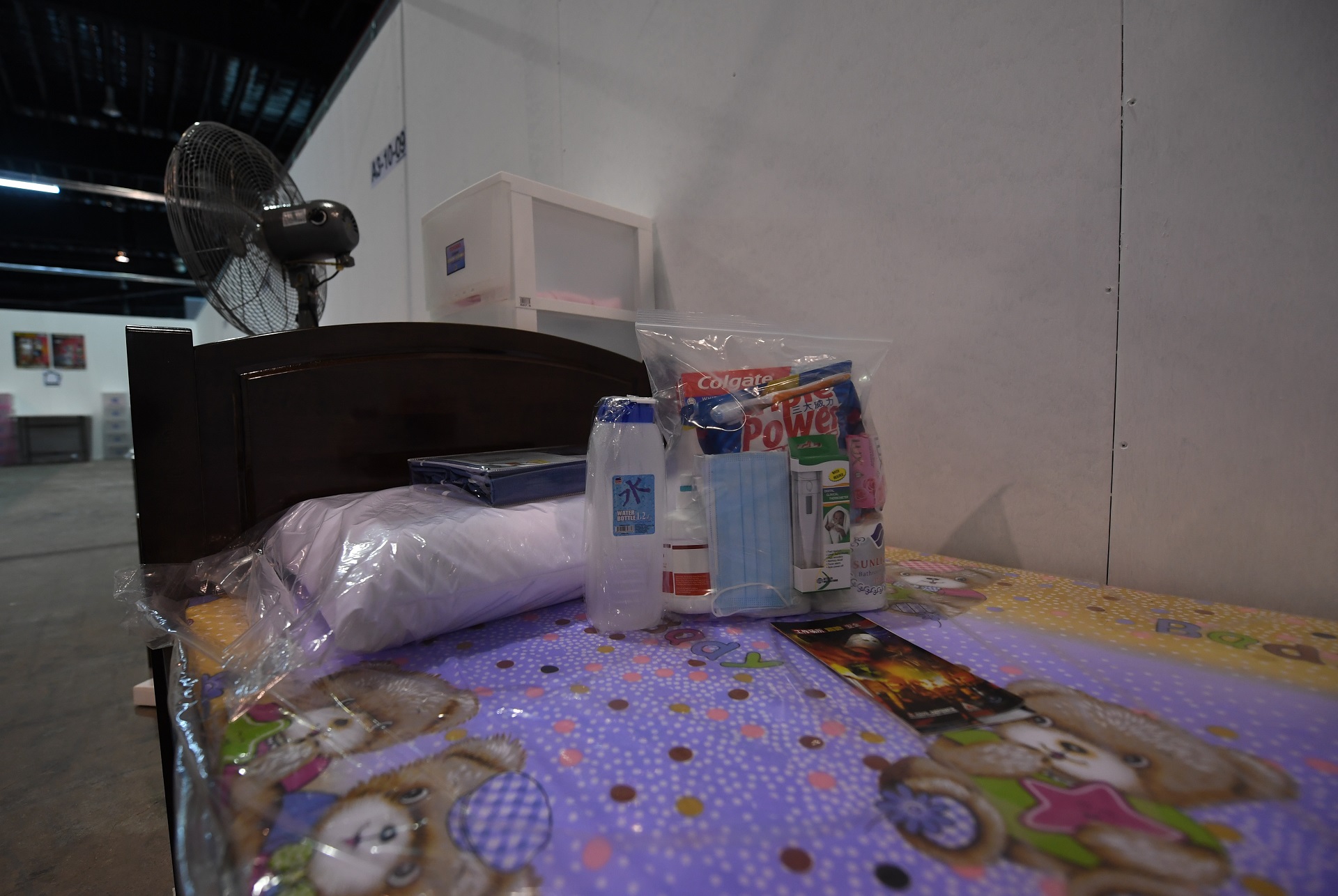 Photo from Pioneer / FB
Photo from Pioneer / FB
Here's an aerial view of the CEC. Each room can have up to 10 beds, with each bed located within a six square metre area to ensure safe distancing.
Jet blowers in the hall will push air in one direction and expel it in an isolated area to reduce transmission of the virus.
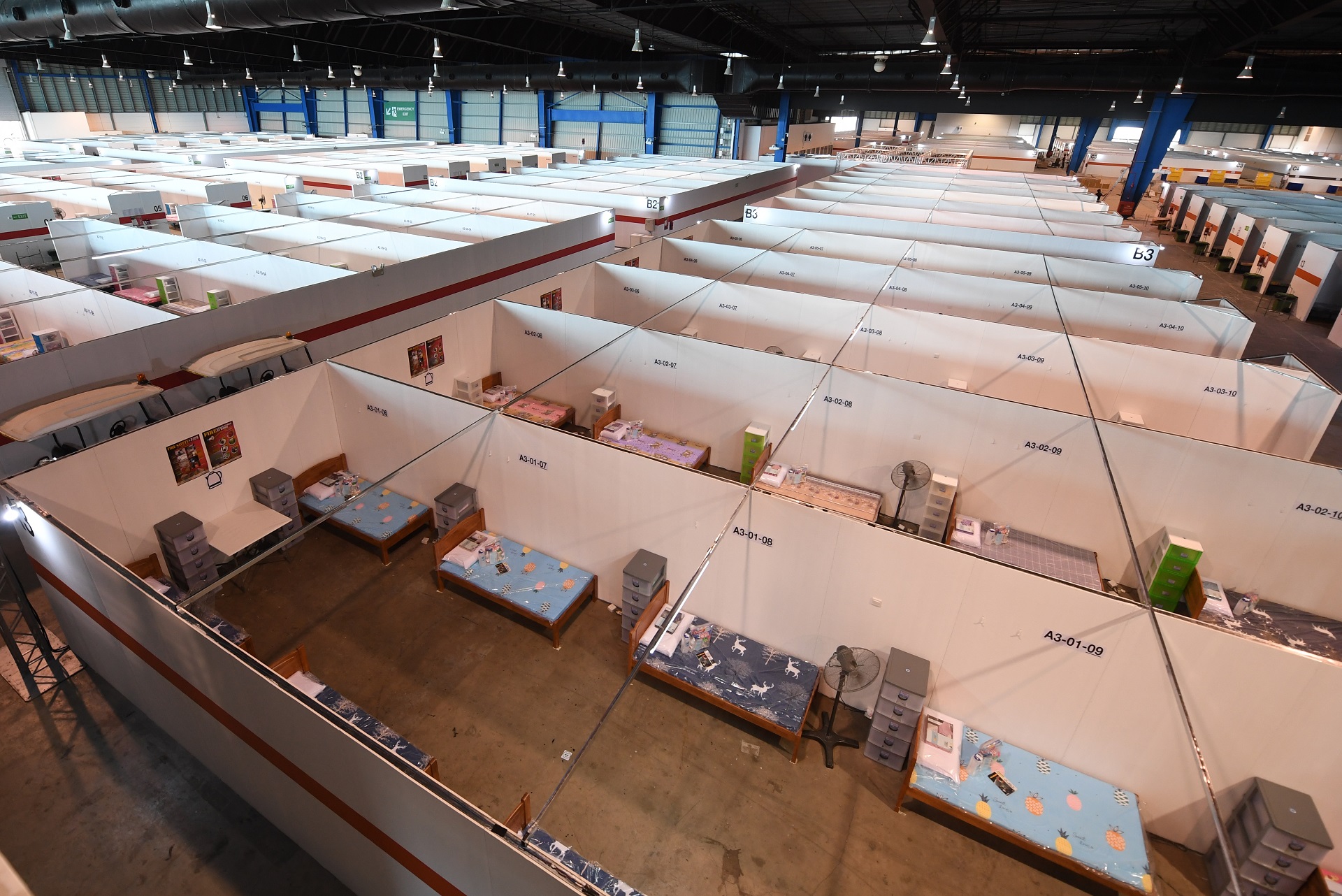 Photo from Pioneer / FB
Photo from Pioneer / FB
The CEC is also equipped with an on-site medical centre, where healthcare professionals are available 24/7.
Here's what one of the consultation rooms looks like.
The rooms include essential medical equipment such as an examination bed, a blood pressure monitor, and a thermometer.
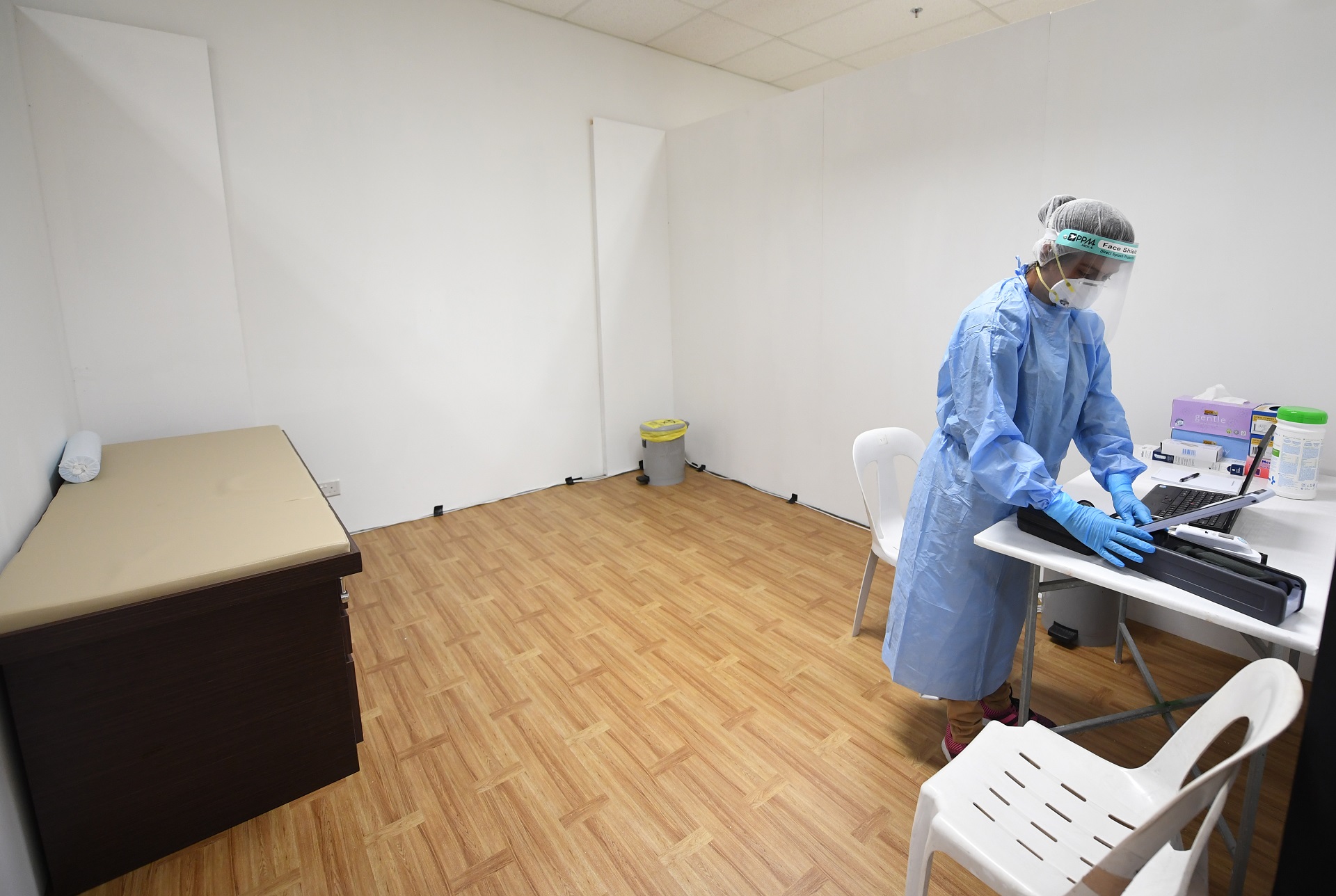 Photo from Pioneer / FB
Photo from Pioneer / FB
Robots and teleconsultations
To reduce human contact and ensure patients do not congregate at the medical centre, healthcare personnel can arrange teleconsultations with patients from remote locations.
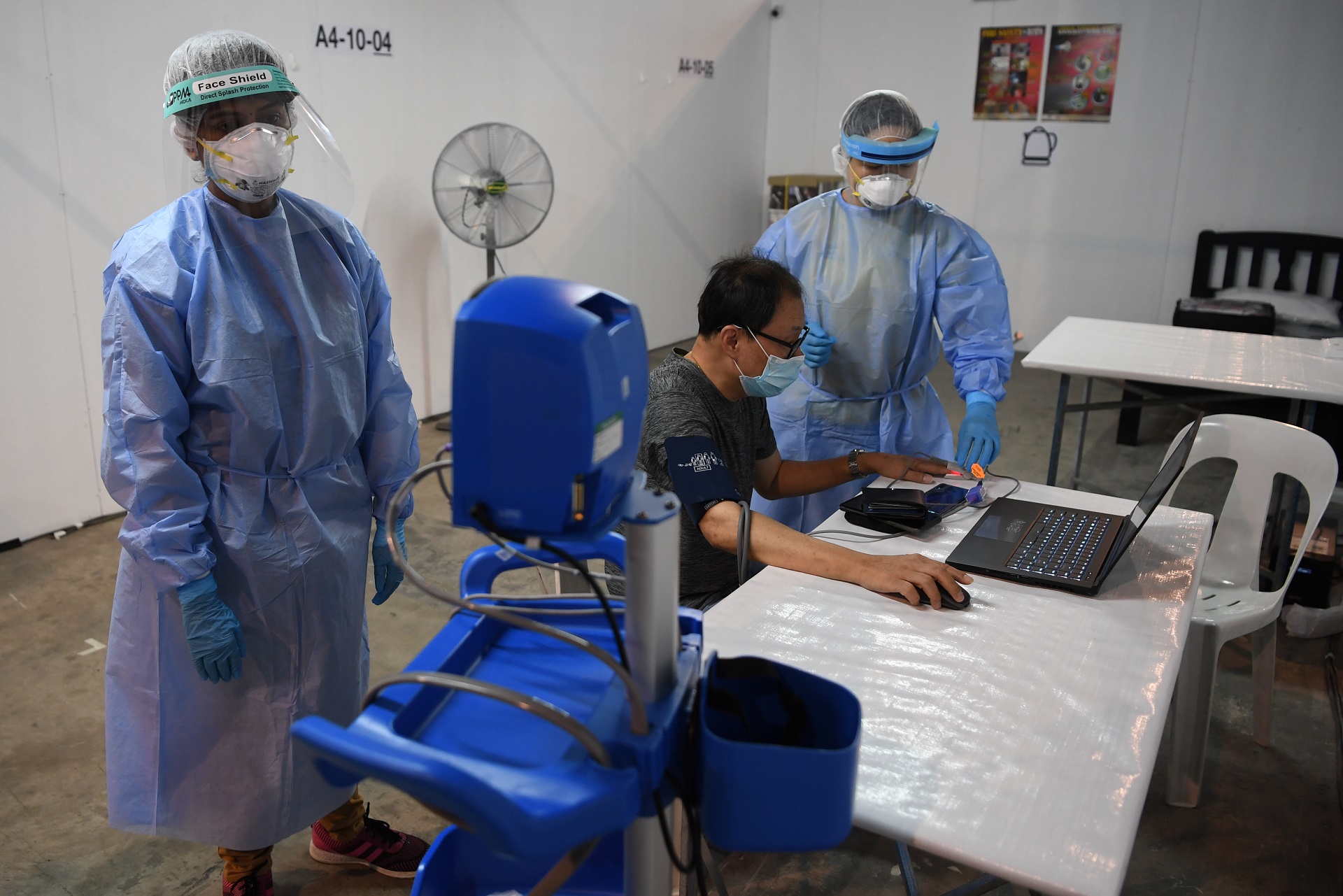 Photo from Pioneer / FB
Photo from Pioneer / FB
Four telepresence robots will also be roving around the CEC to ensure ease of communication. These robots connect patients with volunteers, such as those from the Singapore Indian Association, who are able to speak in their native language.
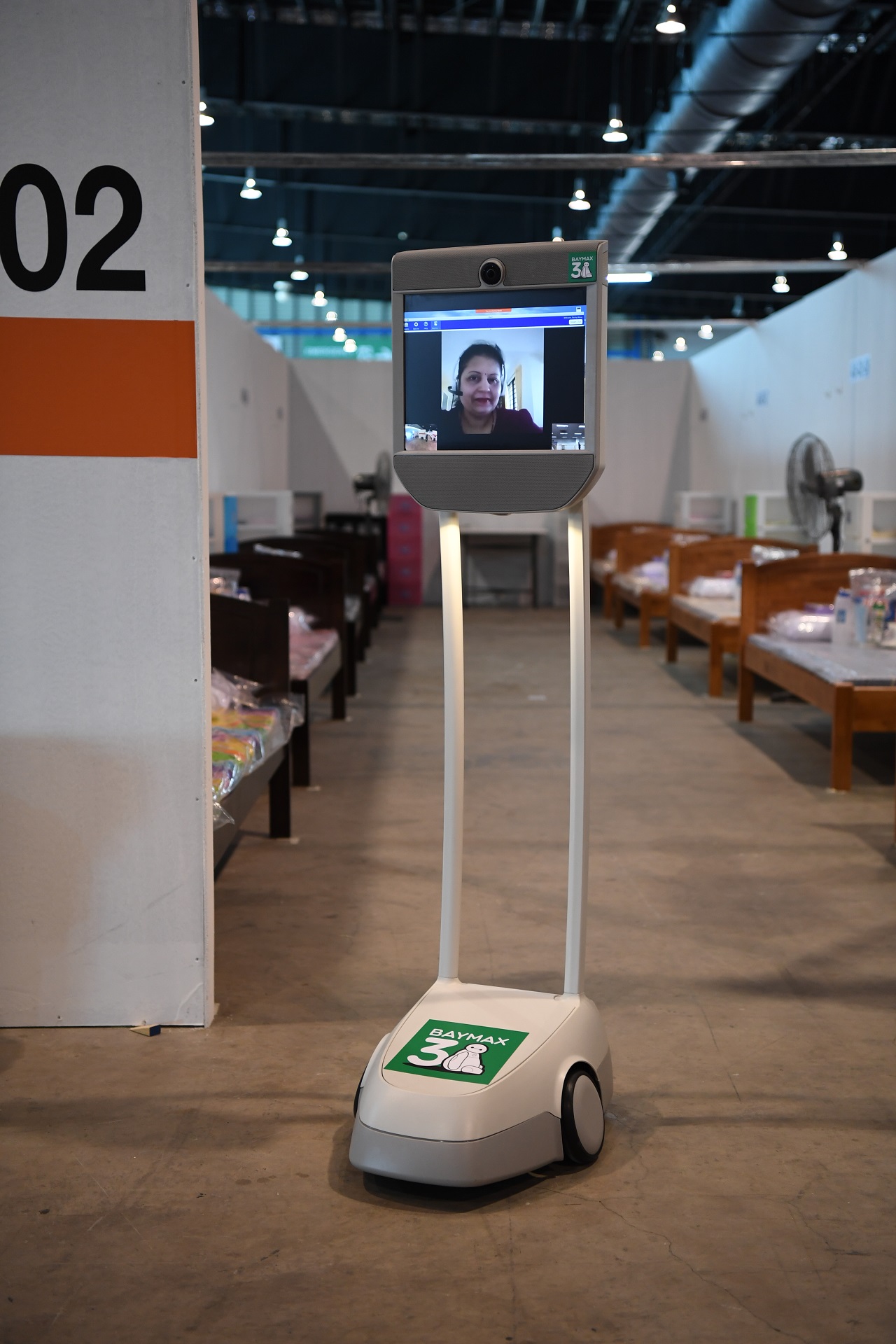 Photo from Pioneer / FB
Photo from Pioneer / FB
ST Engineering robots will also be deployed to deliver food from the food preparation areas to patients' bunks.
Each robot can carry up to 192 packets of food, reducing the need for staff to carry out these operations.
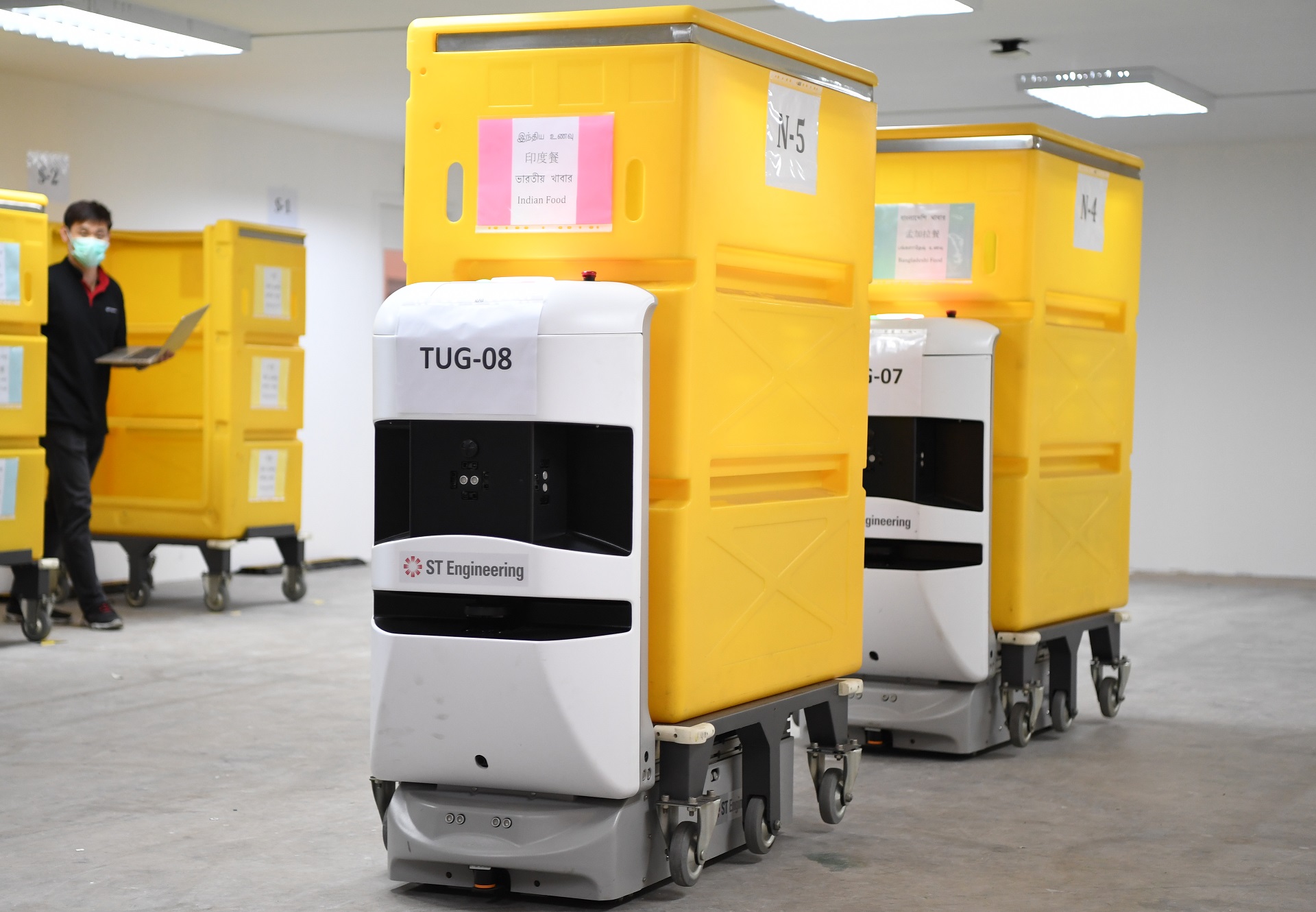 Photo from Pioneer / FB
Photo from Pioneer / FB
Although this indoor facility can only house around 2,700 patients, an outdoor facility is currently in the works, and is set to house another 1,700 patients upon completion.
For a more in-depth look at the CEC's facilities, you can read this story.
Top photo from Pioneer / FB
If you like what you read, follow us on Facebook, Instagram, Twitter and Telegram to get the latest updates.
